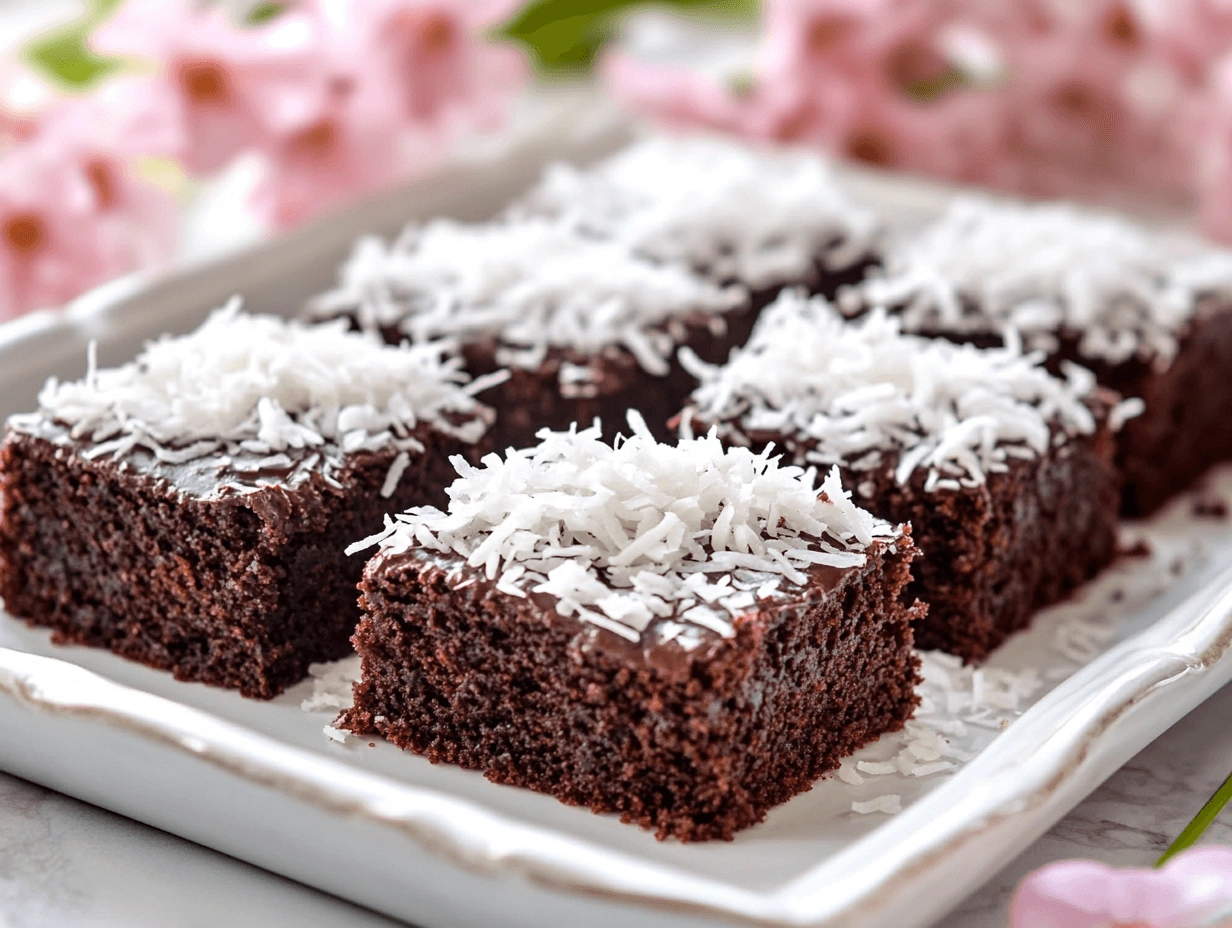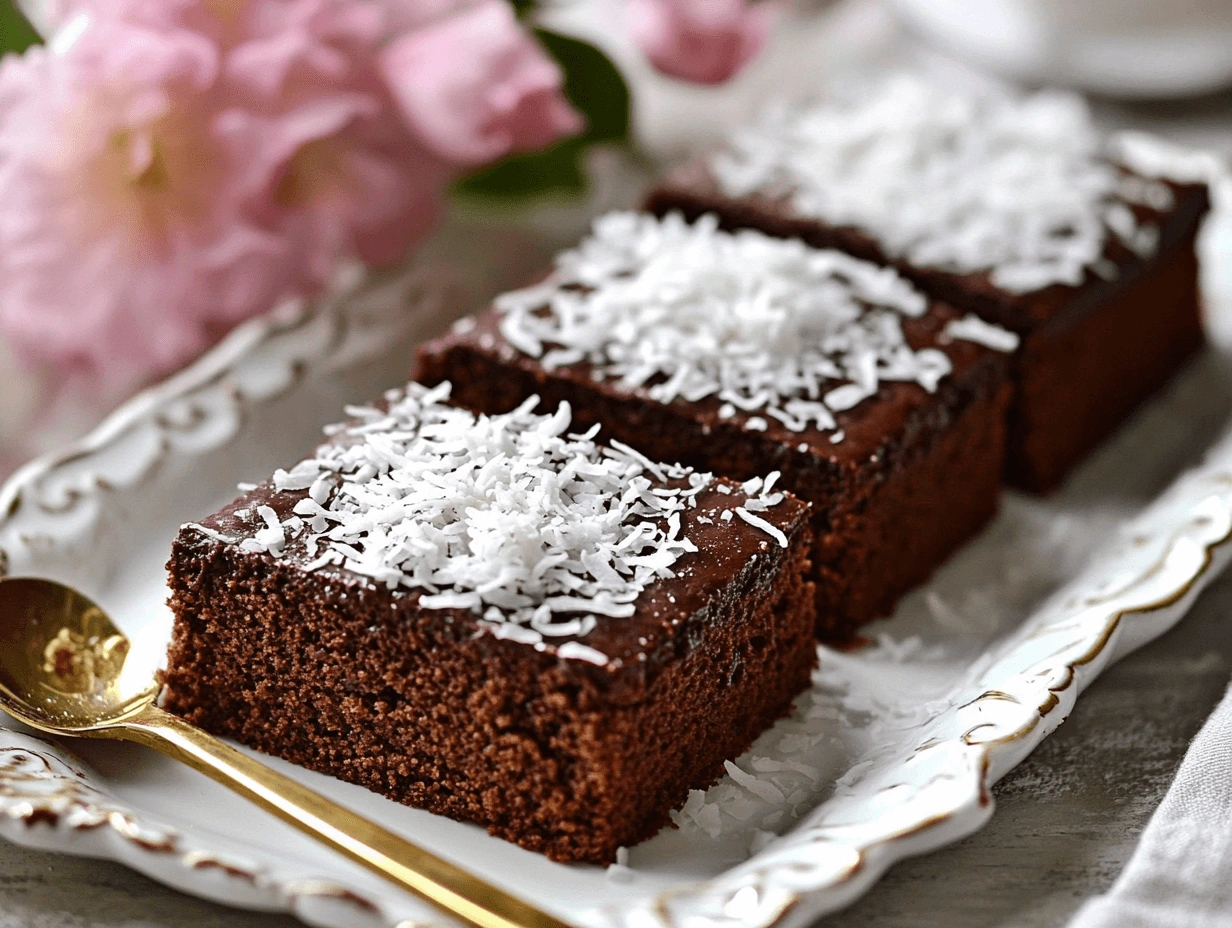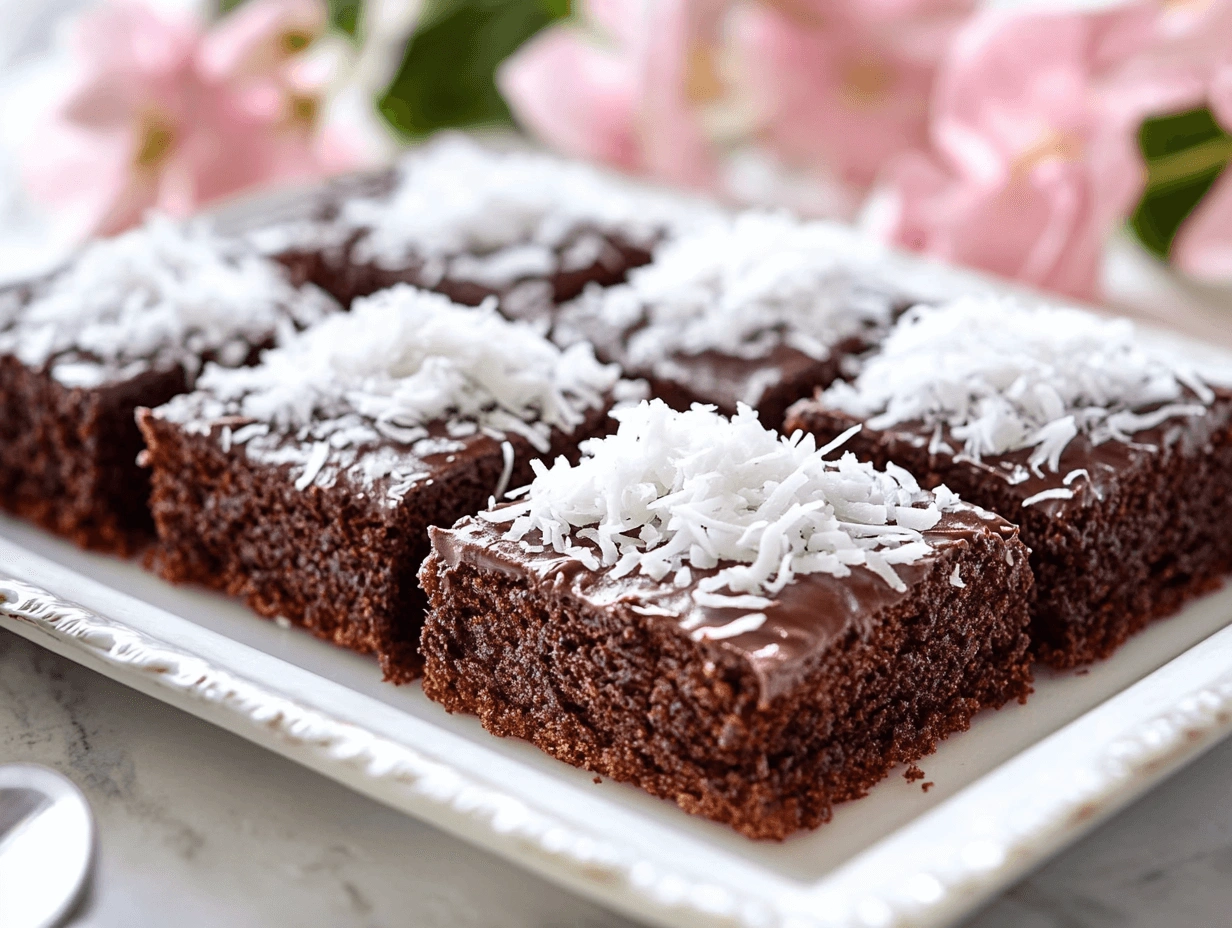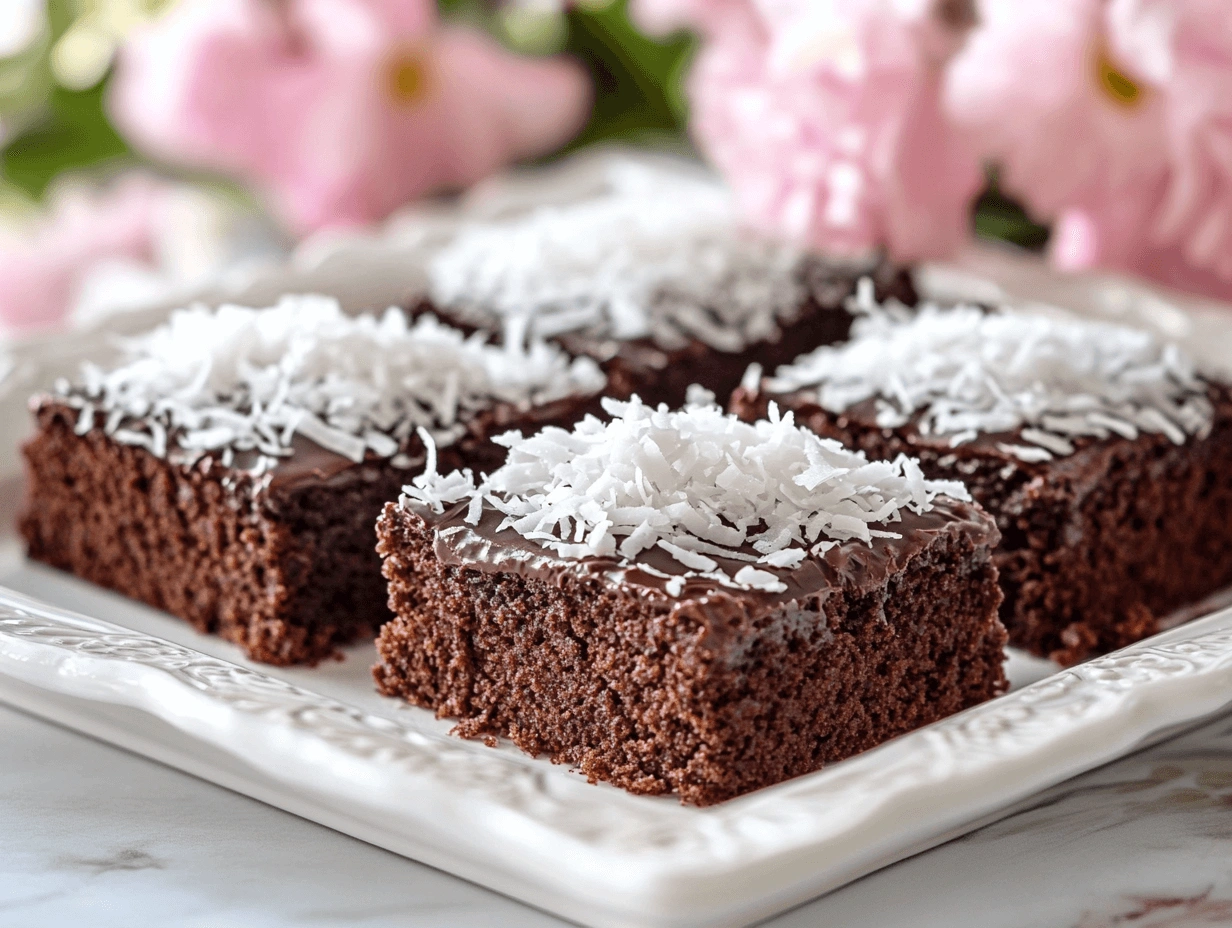Introduction to Kefir Sheet Cake
What Makes It Unique and Irresistible?
Kefir sheet cake is an easy-to-make dessert with a distinctive and delightful flavor. Unlike typical cakes, this one uses kefir, adding a tangy flavor along with a moist and tender texture. Moreover, its versatility allows it to shine as a treat for casual afternoons or as an elegant centerpiece for special occasions. Additionally, kefir’s probiotics make it a healthier alternative to standard cakes, giving you a reason to indulge guilt-free.
If you’re curious about easy recipes that are simple to make at home, check out this guide to homemade rice cakes.
The Origins of Kefir in Baking
Historically, kefir has been a cornerstone of baking in Eastern European kitchens. For centuries, it was used not only for its tangy flavor but also for its ability to create light, fluffy baked goods. Over time, recipes like the Czech “Kefírová buchta” became beloved staples, showcasing how kefir transforms simple cakes into something extraordinary. Bakers worldwide now use kefir in their recipes, appreciating it for its distinctive flavor and potential health advantages.
For more on culinary inspiration and creative cake ideas, read this step-by-step guide to a gender reveal cake.
Why You Should Try This Recipe
There are many reasons why this kefir sheet cake recipe stands out as an excellent choice. First, it’s incredibly easy to make, making it ideal for beginners. Second, its moist texture and balanced tangy flavor make it a standout dessert. Third, kefir’s natural probiotics contribute to gut health, adding a nutritious edge to this indulgence. Finally, the recipe is adaptable, allowing you to experiment with different toppings, frostings, or even flavor variations to suit your taste.
If you’re looking for quick and effortless treats, explore this easy no-bake pumpkin cheesecake balls recipe.
Essential Ingredients and Tools for Kefir Sheet Cake

Kefir: The Secret to a Moist and Flavorful Cake
Kefir is a key ingredient in this recipe, valued for both its taste and its beneficial properties. For instance, its acidity interacts with baking soda to create a light, airy crumb. While plain, unsweetened kefir works best, flavored kefir can be used for a sweeter variation. However, it’s important to adjust the sugar in the recipe accordingly to maintain a balanced taste.
To learn more about the different types of kefir, explore this guide.
Pantry Staples and Baking Essentials
In addition to kefir, you’ll need several key ingredients to make this cake:
- Flour: All-purpose flour works well, but gluten-free versions are a suitable substitute.
- Sugar: Granulated sugar is the default, though brown sugar can add a deeper flavor.
- Eggs: These are essential for structure and binding the batter.
- Butter or Oil: While unsalted butter adds richness, neutral oils like canola or sunflower provide a lighter texture.
- Leavening Agents: Baking powder and soda ensure the cake rises properly.
- Vanilla Extract: This enhances the overall flavor, creating a delightful aroma as the cake bakes.
If you’re stocking up on ingredients, don’t miss this comprehensive checklist of baking essentials.
Recommended Tools for Perfect Results
The right tools can make all the difference in achieving a flawless cake:
- Sheet Pan: A 9×13-inch pan ensures even baking and easy slicing.
- Whisk and Spatula: These help in creating a smooth batter and folding ingredients effectively.
- Measuring Tools: Precision is key in baking, so accurate measuring cups and spoons are a must.
- Cooling Rack: This prevents the cake from becoming soggy as it cools.
For tips on equipping your kitchen, check out our guide to baking tools.
Step-by-Step Recipe Guide for Kefir Sheet Cake
Preparing Your Workspace and Ingredients
Preparation is essential for smooth baking. To begin, preheat your oven to 350°F (175°C). While the oven heats, grease your sheet pan with butter or non-stick spray to prevent sticking. Next, gather and measure all your ingredients. By doing this ahead of time, you’ll save yourself unnecessary stress during the baking process. Additionally, ensure your workspace is clean and organized for efficiency.
For more preparation tips, read this article on effective baking prep.
Mixing the Perfect Cake Batter
- Combine Dry Ingredients: First, whisk together flour, baking powder, baking soda, and salt in a large bowl. This step ensures even distribution of the leavening agents.
- Mix Wet Ingredients: In a different bowl, whisk together the eggs and sugar until the mixture becomes light and airy. Then, add the kefir, vanilla extract, and melted butter or oil, whisking until smooth.
- Incorporate Dry Ingredients: Gradually fold the dry mixture into the wet ingredients. Take care not to overmix, as it may result in a dense cake. Instead, stir just until the ingredients are combined for a smoother texture.
If your batter doesn’t seem right, check out these common troubleshooting tips.
Baking and Cooling Your Cake
- Pour the Batter: Carefully pour the batter into the prepared sheet pan, spreading it evenly with a spatula.
- Bake: Put the pan in the oven and bake for 25 to 30 minutes. To check for doneness, insert a toothpick into the center of the cake; if it comes out clean, the cake is ready.
- Cool: Once baked, transfer the cake to a wire rack. Let it cool completely before removing it from the pan, as this will help maintain its structure and texture.
For tips on achieving even baking, refer to our guide on baking success.
Adding the Finishing Touches
Although the cake is delicious on its own, finishing touches can enhance it even further:
- Frosting: Cream cheese frosting is a classic pairing for this cake, complementing its tangy flavor.
- Fresh Fruits: Garnish with berries, citrus slices, or even tropical fruits for a vibrant presentation.
- Powdered Sugar: A light dusting creates an elegant, understated finish.
For decorating inspiration, explore these creative cake finishing ideas.
Flavor Variations and Creative Twists for Kefir Sheet Cake

When it comes to making kefir sheet cake, the possibilities for customization are endless. Whether you prefer a sweet, zesty, or even savory twist, there are countless ways to make this recipe your own. Below are some creative ideas to inspire your next bake.
Chocolate and Citrus Variations
Chocolate Kefir Sheet Cake:
If you’re a chocolate lover, this rich and decadent variation is for you. Simply substitute ¼ cup of flour with unsweetened cocoa powder. Additionally, adding a handful of chocolate chips or a drizzle of melted chocolate on top enhances its flavor even more. This version pairs beautifully with cream cheese frosting or, for a simpler approach, a light dusting of powdered sugar.
Citrus Kefir Sheet Cake:
For those who enjoy a refreshing twist, consider incorporating the zest of one lemon or orange into the batter. Furthermore, you can replace part of the liquid kefir with freshly squeezed citrus juice to amplify the tanginess. To finish, drizzle a simple citrus glaze made of powdered sugar and juice for a bright and zesty topping.
Seasonal Add-Ins: Fruits and Spices
Fruits:
Adding fruits is an excellent way to infuse seasonal flavors into your kefir sheet cake. For instance, blueberries, raspberries, or diced apples can be folded into the batter for added bursts of flavor and texture. During the fall, canned pumpkin or mashed bananas are fantastic options for adding moisture and natural sweetness.
Spices:
If you’re baking during the cooler months, warm spices like cinnamon, nutmeg, or cardamom can bring a cozy depth to your cake. In addition, a pinch of ginger or cloves pairs particularly well with pumpkin or apple variations, making it perfect for the holiday season.
Exploring Savory Options
Although kefir is most commonly used in sweet recipes, it can also be the star ingredient in savory dishes. To create a savory kefir sheet cake, omit the sugar and consider adding chopped herbs like dill or parsley. Additionally, a sprinkle of shredded cheese, such as Parmesan or cheddar, can elevate this savory twist. This variation works wonderfully as part of a brunch spread or served alongside soups and salads.
Tips for Baking Success with Kefir Sheet Cake
Achieving the perfect kefir sheet cake is easier than you might think. With the following tips, you’ll ensure consistent results every time.

How to Achieve the Perfect Texture
- Use Fresh Kefir: Always use fresh kefir, as it provides the best tang and active cultures. These active cultures interact with baking soda to help the cake rise and maintain its tenderness.
- Measure Accurately: To avoid a dense cake, measure your ingredients carefully. In particular, use the spoon-and-level method for flour to ensure precision.
- Don’t Overmix: Mix the batter until just combined. Overmixing can result in a tough texture, so it’s important to handle the batter gently.
Troubleshooting Common Baking Issues
- Cake Didn’t Rise Properly: Ensure that your baking soda and baking powder are fresh. Since kefir interacts with these leavening agents, their effectiveness is critical for a fluffy cake.
- Sinking in the Middle: Avoid opening the oven door too early, as this can cause the cake to collapse. Instead, wait until at least 20 minutes have passed before checking.
- Dry Cake: Overbaking is often the culprit. Test the cake with a toothpick a few minutes before the end of the suggested baking time to prevent overcooking.
Ingredient Substitutions for Dietary Needs
- Dairy-Free: Replace kefir with a non-dairy alternative, such as coconut milk mixed with a tablespoon of lemon juice or apple cider vinegar.
- Gluten-Free: Use a 1-to-1 gluten-free flour blend for similar results without compromising texture.
- Sugar-Free: Substitute sugar with natural sweeteners like honey, maple syrup, or erythritol for a healthier option.
Serving and Storing Your Kefir Sheet Cake
Your kefir sheet cake deserves to be served and stored in the best way possible. Here are some tips to maximize its freshness and enjoyment.
Ideas for Serving on Different Occasions
- Casual Desserts: Serve the cake plain or with a dusting of powdered sugar for a quick, no-fuss treat.
- Celebrations: Add cream cheese or buttercream frosting and decorate with fruit or sprinkles to create a centerpiece-worthy dessert.
- Brunch: Pair with fresh berries and a dollop of whipped cream for a light and satisfying morning treat.
Proper Storage Tips to Keep It Fresh
- Room Temperature: If unfrosted, store the cake in an airtight container for up to 2 days at room temperature.
- Refrigeration: For frosted cakes, refrigeration is necessary to preserve the topping. However, be sure to bring it to room temperature before serving to enjoy the full flavor and texture.
Freezing for Long-Term Enjoyment
To freeze your cake, slice it into individual portions and wrap each slice tightly in plastic wrap. Then, place the wrapped slices in a freezer-safe bag or container. When ready to eat, thaw at room temperature or warm gently in the microwave. Properly stored, frozen cake can last up to 3 months.
FAQs and Fun Facts About Kefir Sheet Cake and Baking
Kefir is a versatile ingredient with a fascinating history. Below are some common questions and intriguing insights about using kefir in cakes.
Why Use Kefir in Cakes?
Kefir’s acidity activates baking soda, which leads to a soft, fluffy texture. Additionally, its probiotic content adds a subtle tang, making the cake more flavorful and healthier compared to traditional buttermilk-based recipes.
Common Questions Answered
- Can I Substitute Buttermilk for Kefir?
Yes, but while buttermilk works as a substitute, it lacks kefir’s distinct tang and unique probiotic content. - What If I Don’t Have Kefir?
You can create a kefir substitute by mixing milk with a tablespoon of lemon juice or vinegar. - Is Kefir Cake Suitable for Kids?
Absolutely! The baking process eliminates any trace of alcohol from fermented kefir, making it perfectly safe for all ages.
Surprising Benefits of Baking with Kefir
- Improved Digestibility: The probiotics in kefir may aid digestion, even after baking.
- Long Shelf Life: Cakes made with kefir tend to stay moist longer than those made with regular milk.
- Healthier Bakes: Kefir adds nutrients like calcium, protein, and B vitamins, making it a more nutritious choice.
Conclusion: Kefir Sheet Cake
Kefir sheet cake is a versatile and flavorful dessert that seamlessly combines the tang of kefir with the comforting familiarity of a classic sheet cake. By experimenting with creative flavor variations and mastering key baking techniques, you can create a memorable dessert every time. Whether for special occasions or everyday indulgence, kefir sheet cake is sure to impress.
For more inspiration, check out this easy guide to making kefir recipes to expand your baking repertoire. Happy baking!

